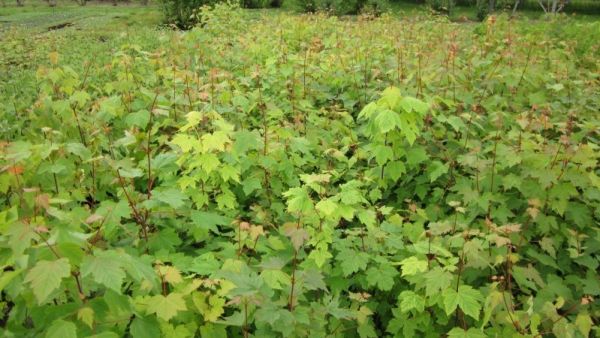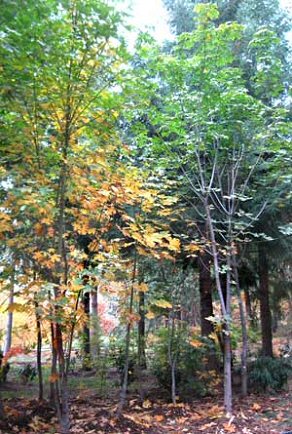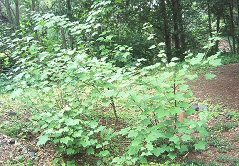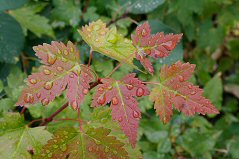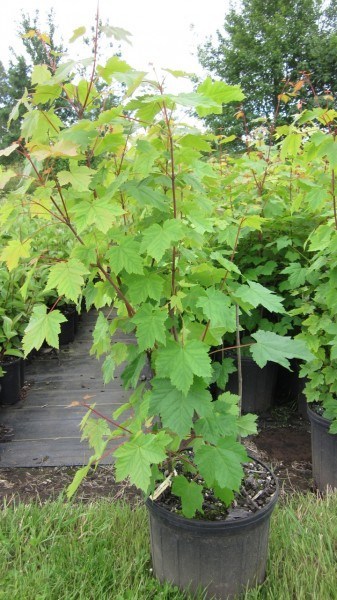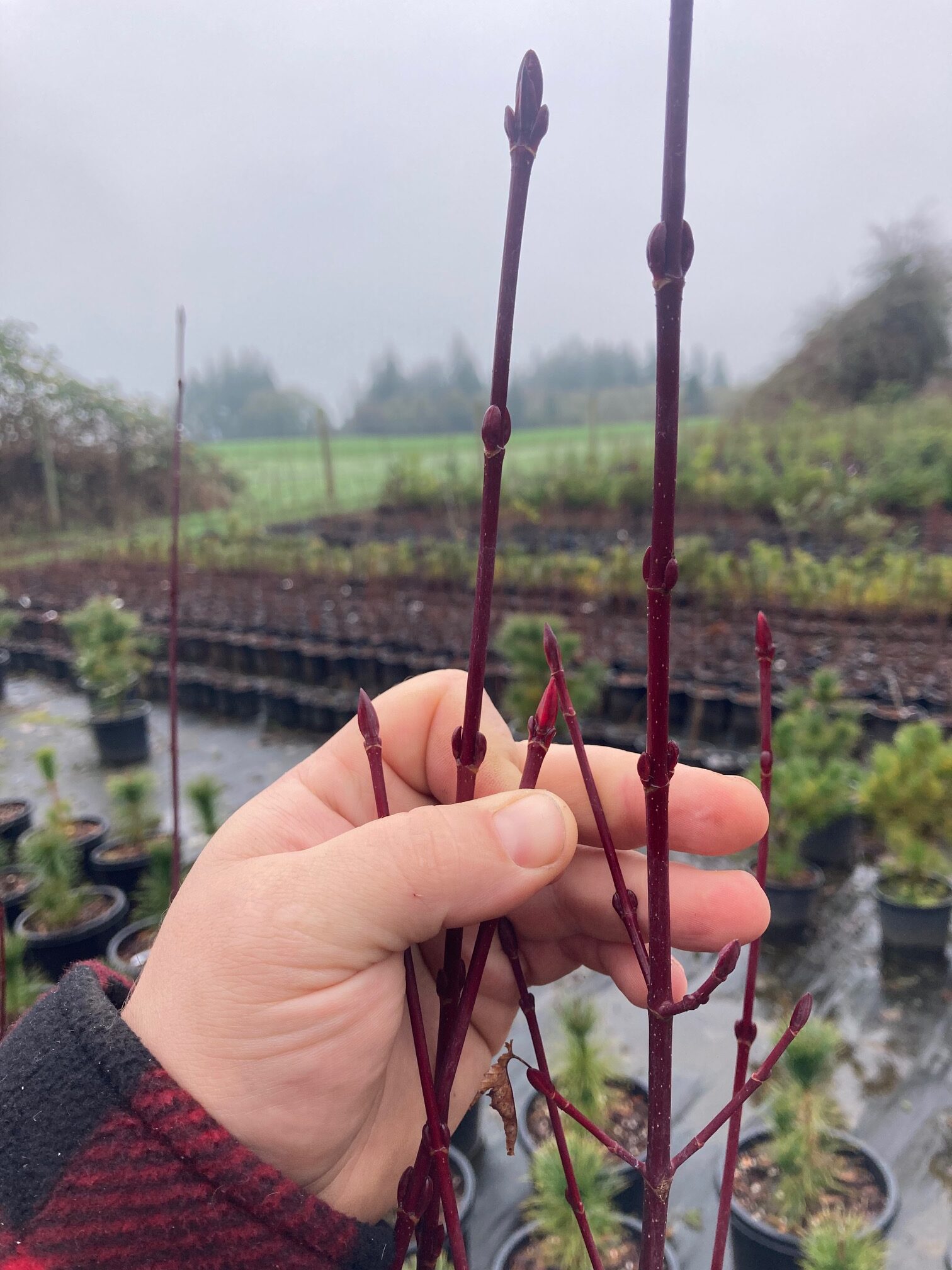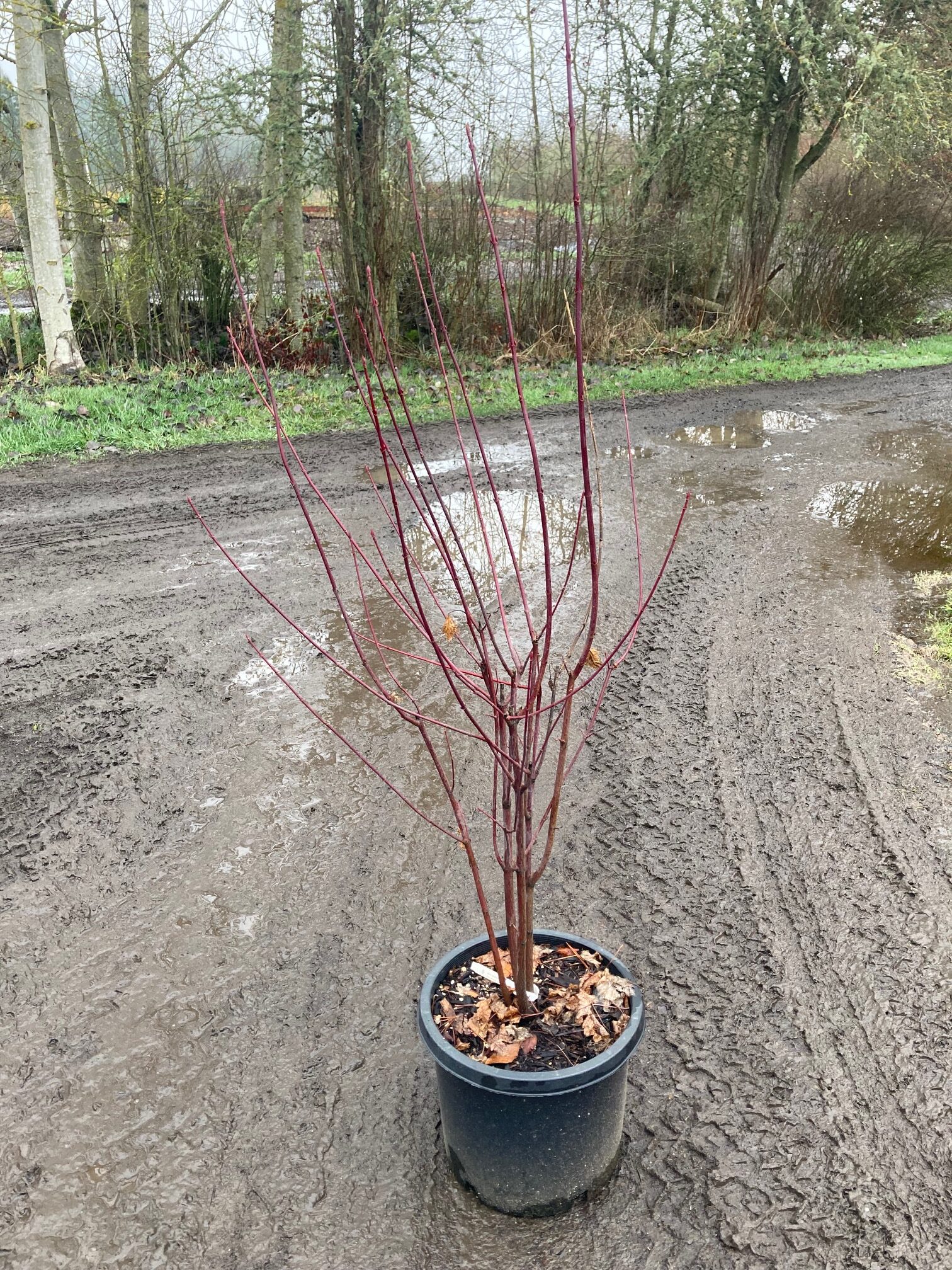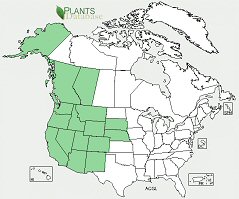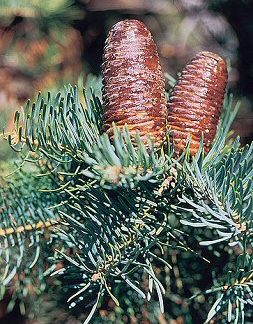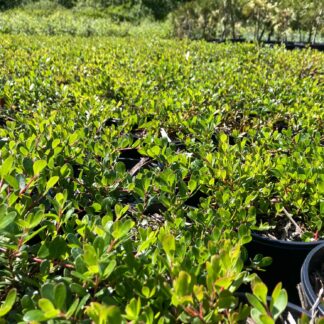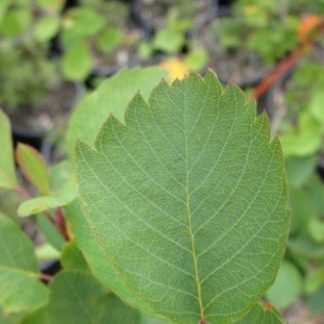Acer glabrum
Rocky Mountain maple
Habit: in dense stands Acer glabrum is usually tall and spindly growing to 32 ft (10m) with opposite, ascending to erect branches, rounded twigs, and a narrow crown. In open stands it occurs as a dense multi-stemmed shrub to 6 ft (2m) tall. The fragrant flower clusters are yellowish-green, and appear at the same time as the new leaves in spring. The fruit is a double samara or winged seed. This species flowers in April-June fruiting in August-October. It displays the typical maple leaf shape, coarsely toothed, 3-5 lobes that often develop red galls. The leaves turn bright yellow, orange, and red in the fall. Smooth, gray bark, red twigs, and reddish, winged seeds provide winter interest.
Ecology: native to the mountains from Alaska to California and occurs along streambanks, canyons, sometimes dry ridges at low to middle elevations and moist sites in high mountains. It usually occurs between 5,000 and 12,000 feet (1500-3700m). Rocky Mountain maple is a long-lived, shade-tolerant species that often persists in the understory of coniferous stands.
Growing Conditions: prefers moist well-drained sites found in both sandy and rocky soils. It grows best with some shade from other trees, especially in warm valley sites, as in its natural habitat of mountain slopes. Rocky Mountain Maple does not tolerate heat and its leaves may scorch if grown in open, hot, dry and windy sites.
Though not as attractive as vine maple, this species is more cold hardy. Rocky Mountain maple is an important species for watershed cover and browse for wildlife and domestic animals and to limited extent slope stabilization.
Specs
Deciduous Tree/Shrub
6-32 ft (2-10m)
10-15 ft (3-4.5m) spread
5-10


